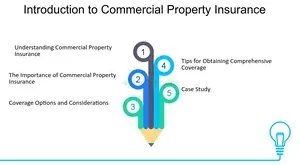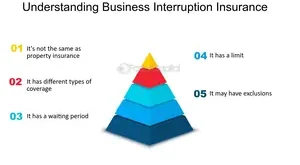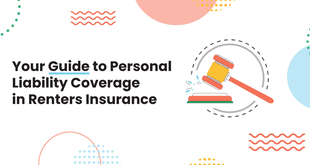Disability insurance is a crucial but often overlooked component of a comprehensive financial plan. It provides income protection if you become unable to work due to illness or injury, ensuring that you can meet your financial obligations and maintain your standard of living. This guide explores the importance of disability insurance, types of coverage available, and tips for selecting the right policy for your needs.
Understanding Disability Insurance
What is Disability Insurance?
Disability insurance is designed to replace a portion of your income if you are unable to work due to a disability. This type of insurance ensures that you can continue to pay for essential expenses such as housing, food, and medical care during a period of disability.
Key Disability Insurance Terms
- Premium: The amount you pay monthly or annually to maintain your disability insurance policy.
- Benefit Period: The length of time the policy will pay benefits while you are disabled, which can range from a few years to until retirement age.
- Elimination Period: The waiting period before benefits begin after a disability occurs, typically ranging from 30 to 180 days.
- Benefit Amount: The percentage of your pre-disability income that the policy will pay, usually between 50% and 70%.
- Own Occupation vs. Any Occupation: Policies may define disability as the inability to perform your current job (own occupation) or any job you are reasonably suited for by education and experience (any occupation).
Types of Disability Insurance
Short-Term Disability Insurance
Short-term disability insurance provides income replacement for a limited period, typically from a few months up to a year. It covers temporary disabilities caused by illnesses, injuries, or surgeries that prevent you from working for a short duration. Benefits usually start after a short elimination period, such as one to two weeks.
Long-Term Disability Insurance
Long-term disability insurance provides income replacement for extended periods, ranging from several years to until you reach retirement age. It covers serious illnesses or injuries that result in long-term or permanent disability. Long-term policies often have longer elimination periods, typically 90 days or more.
Individual Disability Insurance
Individual disability insurance policies are purchased independently and provide coverage tailored to your specific needs. These policies are ideal for self-employed individuals, high-income earners, or those seeking additional coverage beyond employer-provided plans.
Group Disability Insurance
Group disability insurance is often offered by employers as part of an employee benefits package. These policies provide coverage to all eligible employees, usually at a lower cost than individual policies. However, group policies may offer limited benefits and may not be portable if you change jobs.
Social Security Disability Insurance (SSDI)
SSDI is a federal program that provides disability benefits to eligible individuals who have worked and paid Social Security taxes. SSDI benefits are based on your average lifetime earnings and can be difficult to qualify for due to strict medical and vocational criteria.
Benefits of Disability Insurance
Income Protection
Disability insurance ensures that you have a steady income if you become unable to work due to a disability. This financial protection helps you maintain your standard of living and meet essential expenses, reducing financial stress during a difficult time.
Coverage for Medical Expenses
In addition to income replacement, some disability insurance policies offer coverage for medical expenses related to the disability. This can include rehabilitation costs, therapy, and specialized treatments, ensuring you receive the necessary care without depleting your savings.
Peace of Mind
Knowing that you have disability insurance provides peace of mind, allowing you to focus on recovery without worrying about financial stability. This assurance is particularly important for individuals with dependents or significant financial obligations.
Flexibility and Customization
Individual disability insurance policies offer flexibility and customization, allowing you to choose coverage options that best suit your needs. You can select the benefit amount, benefit period, and elimination period that align with your financial goals and risk tolerance.
Choosing the Right Disability Insurance Policy
Assess Your Needs
Determine the amount of coverage you need based on your income, expenses, and financial obligations. Consider factors such as mortgage payments, living expenses, education costs, and medical bills. Assessing your needs helps you choose a policy that provides adequate protection.
Compare Policies and Providers
Research various disability insurance providers and compare their policies. Look at factors such as coverage options, premiums, benefit periods, elimination periods, and the financial strength of the insurer. Comparing multiple quotes can help you find the best coverage at competitive rates.
Understand Policy Details
Carefully read the policy documents to understand the terms, conditions, and exclusions. Pay attention to the definition of disability, benefit limits, and any additional riders or options. Knowing the specifics of your policy helps avoid surprises and ensures it meets your needs.
Consider Your Occupation
Choose a policy that aligns with your occupation and the risks associated with your job. For example, if you work in a high-risk profession, consider a policy with an own occupation definition of disability. This ensures you receive benefits if you are unable to perform your specific job duties.
Review and Update Regularly
Regularly review your disability insurance coverage to ensure it remains adequate as your circumstances change. Major life events such as marriage, the birth of a child, or significant changes in income may require adjustments to your coverage. Updating your policy ensures it continues to meet your evolving needs.
Common Disability Insurance Myths
Myth 1: Disabilities Only Happen to the Elderly
Disabilities can occur at any age due to accidents, illnesses, or injuries. In fact, a significant percentage of disabilities occur during working years. Disability insurance is essential for individuals of all ages to protect against the financial impact of an unexpected disability.
Myth 2: Employer-Provided Coverage is Enough
While employer-provided disability insurance is valuable, it may not provide sufficient coverage to meet your needs. Group policies often have benefit limits and may not cover your full income. Having an additional individual policy ensures comprehensive protection.
Myth 3: Social Security Disability Insurance is Adequate
SSDI benefits can be difficult to qualify for and may not provide sufficient income replacement. The application process is lengthy, and many claims are initially denied. Supplementing SSDI with private disability insurance provides more reliable and adequate coverage.
Conclusion
Disability insurance is a vital component of a comprehensive financial plan, providing income protection and financial security in the event of a disability. By understanding the types of coverage available, assessing your needs, and carefully selecting the right policy, you can ensure you are well-protected against potential financial setbacks. Regularly reviewing and updating your coverage helps maintain adequate protection as your circumstances evolve, providing peace of mind and financial stability.
 kisskh kisskh | Asian Dramas & Movies
kisskh kisskh | Asian Dramas & Movies









